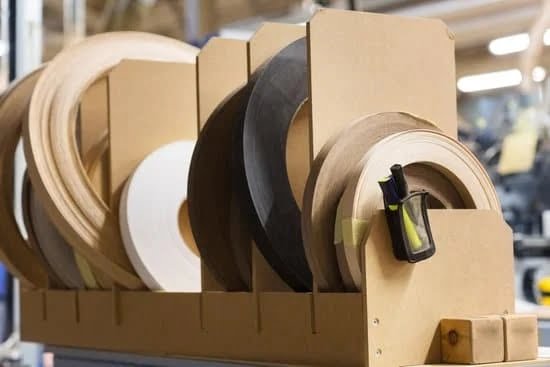Introduction
Woodworking is an ancient craft that is still widely practiced today. Whether you’re a novice or a seasoned carpenter, having the right tools can make your work easier and much more rewarding. Fortunately, there are some essential woodworking tools which every woodworker should have in their toolbox. In this article, we’ll look at the most useful and versatile woodworking tools that every serious hobbyist or professional should own.
The first and most important tool for any woodworker is a hand saw. Handsaws are affordable and relatively easy to use, making them ideal for cutting curves and shapes into beams, boards, panels and other pieces of wood. For accurate angle cuts, the miter saw is another essential tool; this allows you to cut clean angles quickly with less effort than using a handsaw. Table saws come in many different forms but all offer a large flat surface for safe cutting of larger pieces of wood – perfect for making straighter and more precise cuts without risk of injury or accidental damage to other materials nearby.
For shaping back corners or smoothing edges of boards, chisels are an absolute must-have addition to any workshop. Generally available in graduated sizes, they allow you to create very precise notches or indentations as well as removing material from small areas in preparation for joining pieces together later on. Carving gouges also come in handy when detailing more detailed aspects such as thin lines or grooves.
Finally one cannot forget about drills! These battery-powered devices make drilling through thick pieces of material much easier by generating anywhere from 1/8th inch up to 5/8th inch holes with ease compared with traditional hand-held drills which can take considerable time and physical effort to reach the deep depths required for various projects.
Table Saw
A table saw is one of the most essential woodworking tools. It has many benefits and key uses that help with a variety of wood projects, including making precise cuts for pieces that require intricate shapes and angles. Table saws come in different sizes, from 10-inch portable versions up to full size industrial machinery.
Table saws allow a great deal of accuracy when making cuts compared to using hand saws and other manual tools. The adjustable fence aids in keeping the workpiece at a consistent size, while the miter gauge can be used to make angled cuts with ease. Table saws also offer multiple blade speeds and cut depths — allowing the user to customize cut settings depending on the task at hand. Most table saws also have additional features, such as dust collection systems and expanding tables, which can be useful for larger projects. In addition, some models can accommodate various jigs and sleds for even more specialized cutting tasks. A good quality table saw is an investment piece that every serious woodworker should consider adding to their workshop.
Router
A router is a versatile tool used in woodworking and can be used to create different types of edges and patterns on wood, such as: rabbets, grooves, dados, mortises, dovetails, hinges, and much more. Routers come in two main variations – hand-held and table mounted routers. Hand-held routers are held by the user allowing them to make cuts at any angle or direction. Table mounted routers are usually larger and are attached to a table or workbench allowing the user to make precision cuts with minimal effort. Although some experienced professionals prefer the power of a table mounted router, most beginners will find more success with a handheld router due to its smaller size and more manageable weight. Both of these options are extremely useful for any kinds of precision woodwork whether it be for cutting patterns or making intricate joinery like mortises and dovetails.
Planer
A planer is an essential woodworking tool for any serious woodworker, as it is used to accurately cut and shape wooden pieces. It usually consists of a base, a cutter head driven by a motor, and two tables on either side that clamp the piece you’re working on. A planer is particularly useful for when larger boards are needed, as it can even out uneven surfaces with repeated passes. It also helps clean-up boards and rip them in exactly the size you need. The result of using a planer is often professional-looking pieces with an extremely smooth surface finish for enhanced aesthetics. Planers can be handheld or mounted onto stationary tables, and some have multiple cutting heads which provide different cuts per pass. In addition, various blades and chatterers can be used to customize the desired outcome. Planers can be very expensive; however they are labelled as must-haves by frequent woodworkers who value accurate results and quick setup times.
Jig Saw
A jig saw is an incredibly useful tool that can be used to cut through a variety of materials, including wood, metal and plastic. It’s especially handy for cutting intricate shapes and designs as crafting various objects from wood. To utilize the tool effectively, it’s important to understand the differences between blade types and how different blades are designed for specific tasks. In general, a jig saw allows for fast cuts of small pieces due to its uniquely designed rotating blade. The goal of choosing the correct type of blade is to improve performance and accuracy while minimizing any potential risk from kickback or vibrations. As mentioned before, a jig saw can be used on various projects such as drafting unique patterns in carved wooden panels, cutting out complex shapes in sheet material, as well as outlining large areas of curved sections in furniture making. Not only are they efficient tools, they allow craftspeople to create more intricate details than power tools like routers or table saws. With some basic knowledge of safety protocols and understanding the right type of blades needed for each task, anyone can use a jig saw with success!
Drill
A drill is one of the most useful woodworking tools for any level of carpenter. It is an important tool for making holes in many different materials, including wood. It can be used to bore pilot holes for nails, make countersinks for screws, and even create mortises in wood joints. Depending on the type of drill chosen, it can even be used for the installation of concrete anchors and drilling into metal or masonry. A powerful and dependable cordless drill is essential for shop work and potentially dangerous job site tasks such as drilling into electrical boxes or working near live wires. To get perfect holes with your drill it helps to have some specialty drilling accessories such as a centering bit or an auger bit that help to relieve pressure while drilling. With power tools like a drill, safety should always come first; use proper protection when operating and wear goggles or eyewear to protect your eyes from flying debris.
Hammer
The hammer is one of the most basic and essential woodworking tools. It is typically used for driving and pulling nails into and out of pieces of wood. Hammers come in many different styles, sizes, and weight to accommodate different projects and needs. They can have either a straight or curved claw, depending on which type the user requires. The head of the hammer should be made from a strong material such as steel to prevent chipping or splintering when striking nails into wood. The handle should also be durable enough to withstand repeated hits while providing comfortable grip that won’t cause slip-ups or lost strikes. In addition to driving nails, hammers are mostly used for shaping wood by breaking it up into smaller pieces with the help of a chisel and mallet set.
Sanders
Sanders are one of the most useful tools for a woodworker. They allow you to polish and refine the edges of your work, which gives it a professional look. Sanders come in various different types, such as orbital, belt, palm and drum sanders. Depending on your project, one may be better suited than the other. Orbital sanders are great for getting rid of surface blemishes and providing a smooth finish. Belt sanders are used for heavier stock removal, such as shaping and planing rough lumber into usable forms. Palm sanders offer more control when you need precision results. Drum sanders are perfect for flattening board surfaces or removing large amounts of material quickly. No matter which tool you choose, having the right sander can make a huge difference in your projects.
Chisels
Chisels are an essential woodworking tool; they are highly versatile and come in a variety of shapes and sizes. They can be used to shave off small pieces of material, cut complex grooves, shape carving details, and much more. The most commonly used chisel is the bench chisel which has a long handle and comes in a set of multiple sizes to enable you to use it for finer detailed work. Carving chisels (also known as spoon chisels) have a curved edge on one side that enables cutting along curves and grooves more easily than a flat-edged chisel. It also allows for better accuracy when working with intricate details, such as facial features or petals in carvings.
Safety Tools
Safety should always be of the utmost concern when working with wood and other materials during a woodworking project. Safety tools such as goggles, dust masks, ear protection, gloves and aprons are essential for preventing injuries and providing necessary protection for yourself and your work area. It is also important to invest in good quality tools that are sharp enough to easily cut through various types of woods. You should also consider investing in a saw or two like a handsaw, table saw or miter saw depending on your project needs. Also make sure to have good quality chisels and screw drivers in different sizes and shapes available to help complete whatever detailed cuts or shaping are needed for the project.
Having the right power tools can make any task easier, especially those involving heavy duty projects such as planing or drilling. Investing in some basic corded drills, jig saws, sanders and routers can come in handy when trying to get intricate details on large pieces of wood or even making tables or furniture from scratch. An oscillating tool may also be helpful for tackling small cutting jobs that require precision accuracy. Other important tools may include screw clamps to hold tight connections between the board pieces and square rulers for measuring angles accurately. Lastly, it’s wise to invest in at least one quality hammer so you can drive nails home without fear of splintering expensive hardwood boards you have slaved over! All these items will combine nicely with your already growing tool collection and ensure success while completing your future DIY projects like a pro!
Conclusion
Having the right set of woodworking tools makes all the difference for a successful DIY project. Woodworking requires specific, high-performance tools that make short work of cutting, sanding and other craft-related tasks. Whether you’re a beginner or an experienced woodworker, having a complete toolkit is essential for every job—from a simple furniture update to building your own carport. Your best bet is to invest in quality power tools and hand tools like saws, drills, planers and routers that are built to last and get the most out of any DIY projects.
There are many additional items that may be needed when tackling complex woodworking tasks such as safety glasses, noise cancelling headphones, dust mask and respirator and protective clothing and gloves. These items not only serve to protect your own body from harm but also give peace of mind when working with materials such as hardwoods which require extra safety measures due to their hardness. Furthermore, an organized workspace can help ensure you can quickly find the tool you need before starting your project—having multiple drawers or compartments makes it easy to keep track of all your supplies. Lastly, never underestimate how much time preparing for your project with the correct tools can save you later on! By taking the time to ensure you have all of the essential items at hand can mean less hassle during the project itself and result in a higher success rate—transforming your DIY projects through successful outcomes!

Hi everyone! I’m a woodworker and blogger, and this is my woodworking blog. In my blog, I share tips and tricks for woodworkers of all skill levels, as well as project ideas that you can try yourself.





